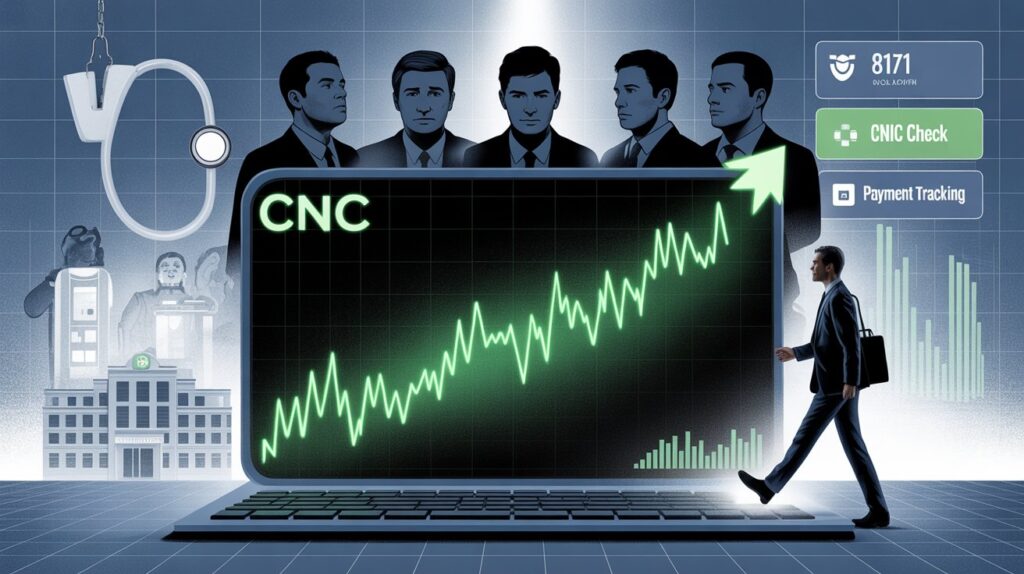Introduction
There’s a famous Warren Buffett line you’ve probably heard more than once: “Be fearful when others are greedy, and greedy when others are fearful.” Right now, that quote feels tailor-made for Centene Corporation (NYSE:CNC).

The stock has been under pressure, headlines have leaned negative, and plenty of investors are moving on to “sexier” plays like AI or crypto. But the good news is, healthcare isn’t going away. In fact, it’s one of those industries that keeps going no matter what the economy does. So what happens is, while the crowd is focused elsewhere, Centene might quietly be setting itself up for long-term gains.
Let’s dig into why CNC stock could be one of those “fearful times” opportunities that makes sense to consider.
Why Investors Are So Nervous About Centene
The problem is that Centene operates in one of the most politically sensitive areas of healthcare: Medicaid and government-backed insurance programs. Anytime there’s talk about budget cuts, reimbursement changes, or healthcare reform, companies like Centene get dragged into the storm.
In fact, analysts expect Centene’s growth to cool off compared to the blockbuster expansion years of the 2010s. Add in competition from giants like UnitedHealth and Humana, and it’s easy to see why investors might hesitate.
But here’s the thing: Centene still covers over 28 million members. That’s not a company in retreat — that’s a company deeply woven into the fabric of the U.S. healthcare system.
The Fundamentals Tell a Different Story
If you stop at the headlines, Centene might look like it’s losing momentum. But if you peek under the hood, the fundamentals aren’t nearly as gloomy.
Centene pulled in more than $150 billion in revenue in 2024. That’s bigger than the GDP of some countries. Yes, earnings per share slowed down, but the company is still profitable and actively buying back stock. That’s a strong signal that management sees value at current prices.
Here’s a quick breakdown of the essentials:
| Metric | What It Means |
|---|---|
| Revenue (2024) | ~$150B – shows Centene’s massive scale |
| Membership | 28M+ – steady customer base |
| EPS Trend | Slower, but still positive |
| Share Buybacks | Returning capital to investors |
| Debt Level | Manageable thanks to recurring cash flow |
For long-term investors, this looks less like a “dying business” and more like a maturing company entering its next phase.
Why Fear Creates Opportunity
Actually, this is where Buffett’s quote really comes into play. Right now, the fear is louder than the facts. Healthcare demand doesn’t shrink in recessions, and Medicaid enrollment has remained strong even as the U.S. economy shifts post-pandemic.
So what happens is, Centene is trading at a discount compared to many of its peers. If the company simply performs steadily — not even spectacularly — there’s room for upside. And with share buybacks in place, each share you own gets a little more valuable over time.
Comparing Centene to the Market
Let’s put things in perspective.
- Tech stocks are chasing trillion-dollar valuations, but they’re priced for perfection.
- Energy companies have boom-and-bust cycles tied to oil prices.
- Centene? It’s sitting in a defensive sector with predictable demand.
Healthcare may not be as thrilling as AI, but it’s a foundation of everyday life. And sometimes, those “boring” foundations make the most dependable investments.
Risks You Can’t Ignore
Of course, no investment is risk-free. With Centene, there are three big things to keep in mind:
- Political risk – If Medicaid reimbursement rates get squeezed, profits could shrink.
- Competition – UnitedHealth and Humana are dominant players with scale advantages.
- Execution – Centene is still restructuring, selling off non-core businesses, and streamlining operations. If that process stumbles, it could weigh on results.
But the good news is, Centene has already taken steps to sharpen its focus. By doubling down on its core strengths, it’s setting up to run a tighter, more disciplined operation.
How This Relates to Broader Investing Psychology
You know, one of the hardest things in investing is going against the crowd. When everyone’s piling into AI or buzzing about crypto, it’s not exactly fun to talk about managed healthcare. But that’s where opportunity often hides.
Think about it like checking your 8171 web portal for payment tracking or CNIC confirmation. Most people only look when they “feel like it,” but the ones who check regularly spot the updates first. In the same way, investors who track undervalued sectors can spot opportunities before the masses wake up.
A Simple Way to Think About Centene in 2025
Here’s a plain-English way to frame it:
- If you want fast money or explosive growth, CNC probably isn’t your play.
- If you want steady demand, defensive positioning, and potential upside from fear-driven undervaluation, Centene makes more sense.
Sometimes, slow and steady does win the race.
Final Words
Centene isn’t going to dominate headlines like Nvidia or Tesla. But it doesn’t have to. What it offers instead is stability in an uncertain world, paired with the potential for quiet, long-term gains.
If you’re willing to think a little differently — to be “greedy when others are fearful” — CNC stock in 2025 might deserve a closer look.
FAQs
1. Why has Centene stock struggled recently?
Because of worries about slower growth, political risks, and healthcare policy debates.
2. Is Centene a dividend stock?
No, but it rewards shareholders through aggressive stock buybacks.
3. How does Centene make most of its money?
It provides managed healthcare services, mainly through Medicaid and Medicare Advantage.
4. Is CNC undervalued compared to its peers?
Yes, Centene trades at a discount to bigger players like UnitedHealth, which creates potential upside.
5. Is Centene a safe investment for 2025?
It’s not risk-free, but its essential role in healthcare gives it a defensive edge during market volatility.

Leave a Reply